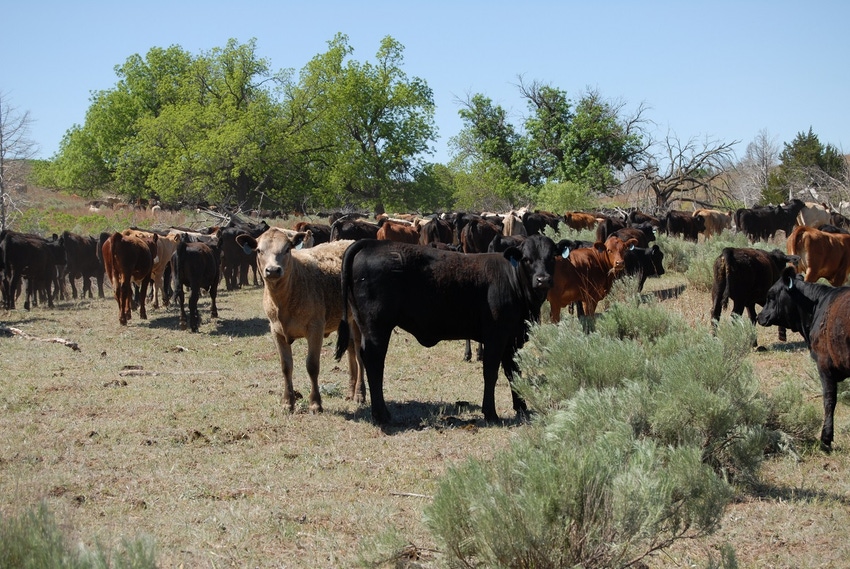
Ranchers from all parts of the grazing world have found that holistically planned grazing management -- management designed to benefit all parts of the soil-plant-animal-wealth-human complex we call a ranch -- to be their most valuable tool.
When properly managed, more forage is grown, animal performance is better, range condition improves, and less money is spent, which is very important in the present economic crunch.
Although some use planned grazing in conjunction with practices that have become established as conventional management -- nitrogen fertilizer, weed sprays, poisons to kill livestock parasites, and reliance on vaccines to head off disease, many of these practices become not only unnecessary but counterproductive after the effects of planned, high-stock-density grazing become evident in the soil. Animals grazing forage grown on soil that has high organic content and robust soil life are remarkably free of many of the ills that plague animals grazing forage which has had its growth forced with high rates of nitrogen.
Some of the maladies that decrease as soil health improves are retained placentas, eye disease, hoof rot, poor breed back, and calf scours. There are more than a few reasons this occurs, but a big one is that trace elements formerly tied up by heavy fertilizer use become available in the forage. An example from horticulture is this: Zinc rosette in pecans is caused by a deficiency of plant-available zinc. Many pecan producers spray a zinc solution on their trees multiple times a year to control the disease. When heavy nitrogen use is halted, especially if high-stock-density grazing is practiced in the orchard, rosette will often disappear.
We are constantly being exposed to new and powerful technology and often shamed if we do not immediately adopt the latest and best. It is easy to lose sight of how effective good animal husbandry and good agronomic practices can be in promoting plant and animal health and productivity. It is possible to find ranchers in many different areas that have a cost of production half that of their neighbors. This is possible because healthy plants growing in healthy soil, when grazed correctly, make for healthy animals with few needs for expensive inputs. The cow can go about doing what she does best, upgrading the value of grass. There is a vast difference between supplementing minerals that are in short supply or providing some protein on dormant forage and what many ranchers spend on a routine basis.
There are always options; if a set of animals can't survive without extensive supplementation, it is probably time to change animals. If it takes four tons of hay to winter a cow on the High Windy, perhaps you should not winter there. It is less costly and far easier to head off problems through planning than trying to deal with them after they develop. Susceptibility to internal parasites, and other parasites, is genetic and animals can be selected for resistance. There are other methods that can be used in the meantime. Control internal parasites by leaving a high forage residual behind and moving regularly to fresh pasture.
These are the types of things that should be included in a well-thought-out grazing plan. Such a plan is far more than a roadmap of the animals' circuit through a set of paddocks. It is how you keep track of where every animal needs to be at what time and why to maximize the value of your management. I cannot image trying to manage a grazing operation of any size without planning the grazing.
Recently it has become fashionable in some corners of academia to cast aspersions on any grazing management other than continuous grazing. The rationale for most of this bad mouthing is that the benefits of controlled rotational grazing are not well documented in scientific literature. Yet Richard Teague of Texas A&M University and his cohorts have done a real service by documenting the ecological effects on real ranches over a 10-year period. Two ranches used holistically planned grazing, one continuous grazing at a low stocking rate, and one grazed continuously at a heavy stocking rate. The two ranches using planned grazing where stocked at a heavy rate. The results were dramatic, with planned grazing being superior to continuous grazing for the animals, for the land, and financially for the rancher. There is more of this research to come. Those who would like to see the Teague documentation can find the papers in Volume 128 of the Journal of Environmental Management and in the paper titled "Grazing management impacts on vegetation, soil biota and soil chemical, physical and hydrological properties in tall grass prairie" in The Journal of Agriculture Ecosystems and Environment.
This type management truly is a winner on all fronts.
About the Author(s)
You May Also Like




